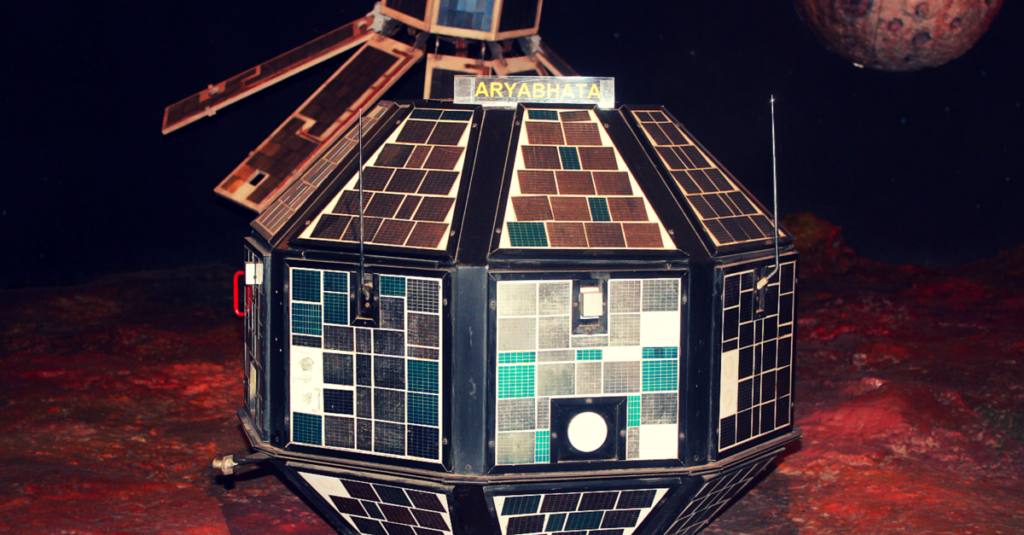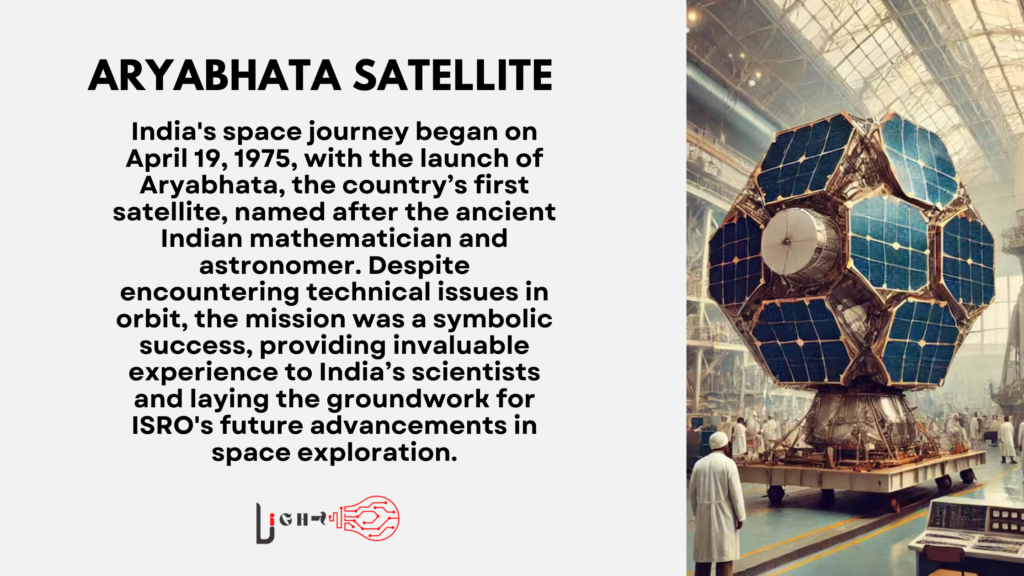India’s space journey began with the launch of Aryabhata, the country’s first satellite. Named after the ancient Indian mathematician and astronomer, Aryabhata was launched on April 19, 1975, from the Soviet Union’s Kapustin Yar. This mission marked India’s foray into the world of space research and technology.
Although the satellite faced technical challenges shortly after reaching orbit, with a power failure that limited its operations, Aryabhata was a symbolic and strategic success. It provided India’s scientists and engineers with invaluable experience in satellite development and space technology. This pioneering mission laid the foundation for ISRO (Indian Space Research Organization) to advance in space exploration and develop future missions that propelled India to global recognition in the space community.
Aryabhata’s Development and Launch
The Aryabhata satellite’s development was a collaborative effort between India and the Soviet Union. The Indian team, led by ISRO, worked closely with Soviet scientists to ensure the satellite’s successful launch. Aryabhata was primarily designed for scientific research, specifically focused on astrophysics and space radiation. It weighed 360 kilograms and featured 26 sides, making it a unique and visually distinct satellite for its time.
Challenges Faced During Development
Despite the success of the launch, Aryabhata’s journey was not without challenges. Power system failures occurred early in the mission, severely limiting its operational capabilities. These setbacks, however, were invaluable learning experiences for ISRO engineers. The issues helped refine future designs and operations, ensuring that subsequent missions would be more robust.

Key Collaborations in the Aryabhata Mission
The mission’s success was built on strong international collaboration. India partnered with the Soviet Union, leveraging their advanced space technology and expertise. This collaboration was essential to overcoming the technical and financial hurdles that often accompany ambitious projects like satellite development. Through this partnership, ISRO gained access to crucial resources and knowledge, shaping its future missions.
Karnam Malleswari: A Pioneer in Indian Women’s Sports
To know more click here:https://light.vintbit.com/general-knowledge/karnam-malleswari-olympic-medalist/
Scientific Contributions and Achievements of Aryabhata
Although Aryabhata encountered technical issues that curtailed its operations, it still managed to contribute to scientific research. Designed to study space radiation, solar physics, and x-ray astronomy, Aryabhata represented a significant leap forward for Indian science. Its data was limited, but the mission’s real success lay in what it taught India about satellite design, launch, and management.
Impact on Indian Space Research
The experience gained from the Aryabhata mission was a stepping stone for India’s space research programs. It gave ISRO the confidence and technical expertise to pursue larger, more complex missions. Despite its technical problems, Aryabhata was a key factor in building the infrastructure and workforce necessary for India’s space ambitions.
The Legacy of Aryabhata in Indian Space History
Aryabhata’s legacy is one of perseverance, innovation, and collaboration. As India’s first satellite, it represents the country’s early aspirations in space exploration. While the satellite itself was not a resounding technical success, it laid the foundation for India’s future space missions. ISRO built on the lessons learned from Aryabhata to become one of the world’s leading space agencies, launching satellites, space missions, and even sending probes to Mars.
Aryabhata remains a symbol of India’s determination to achieve greatness in space exploration, inspiring future generations of scientists and engineers.1
Conclusion
The Aryabhata satellite was not just India’s first step into space; it was the cornerstone on which ISRO built its future. Despite technical setbacks, Aryabhata played a vital role in shaping India’s space program, influencing many of the breakthroughs that followed. Its legacy continues to inspire India’s space journey, setting the stage for more advanced missions that highlight India’s growing prominence in global space research.

